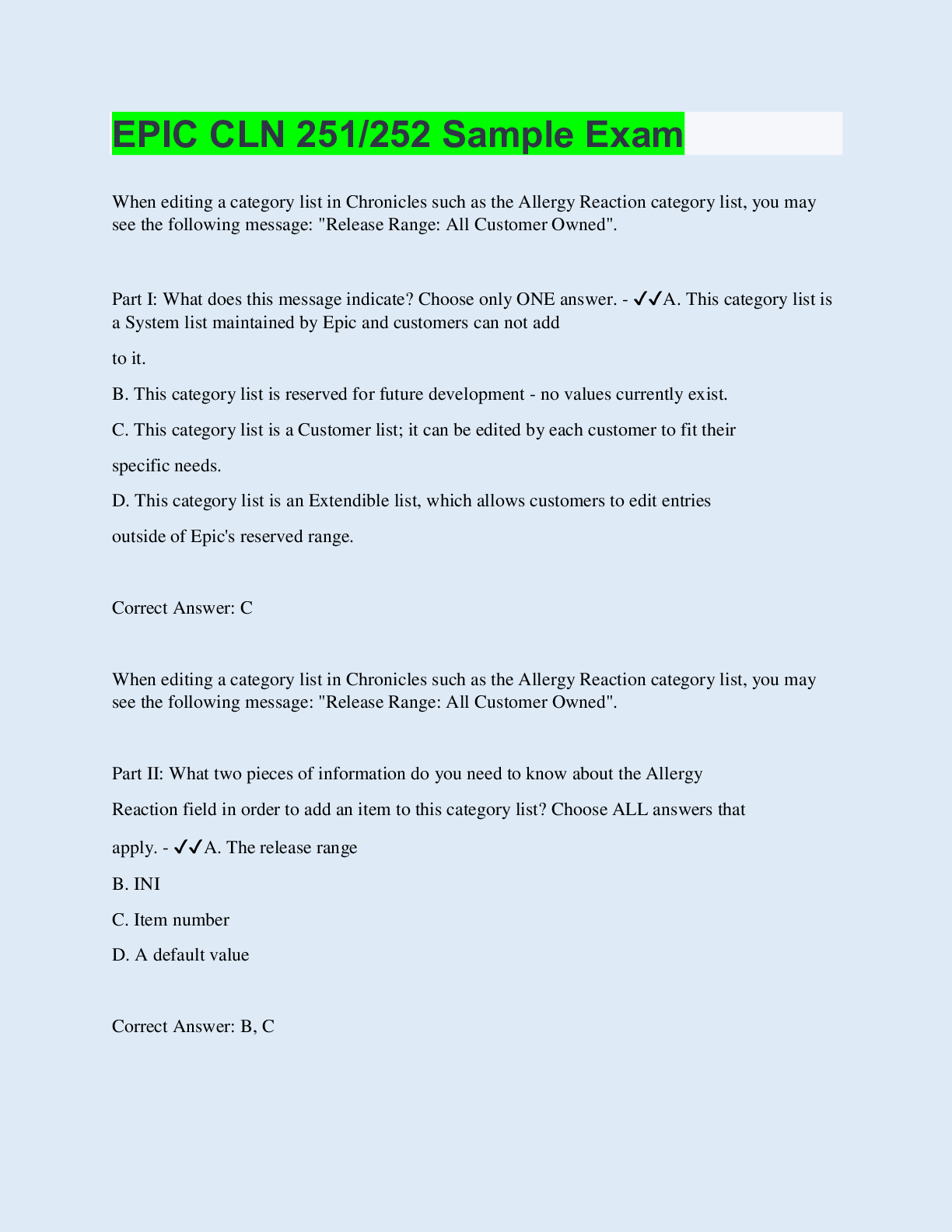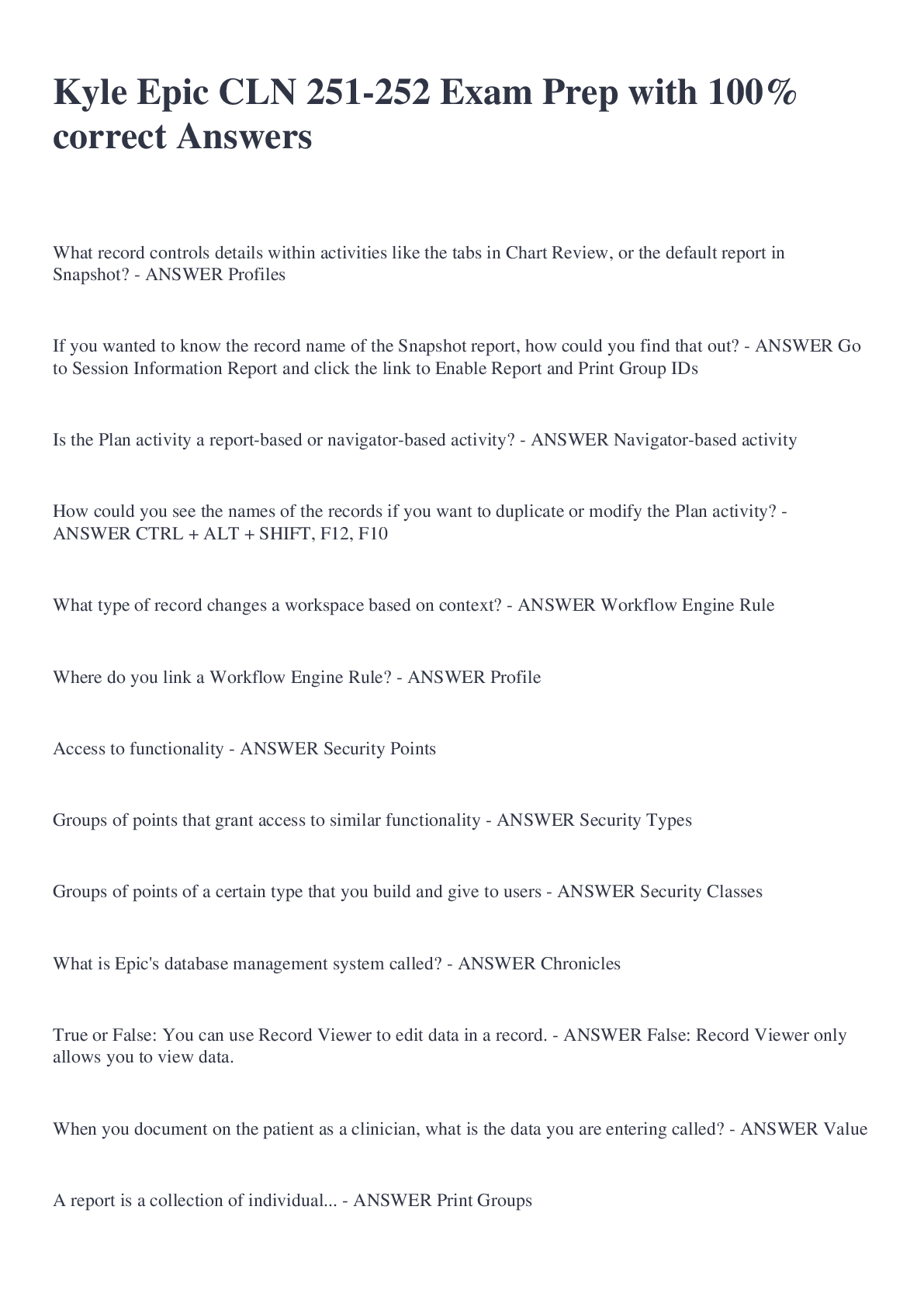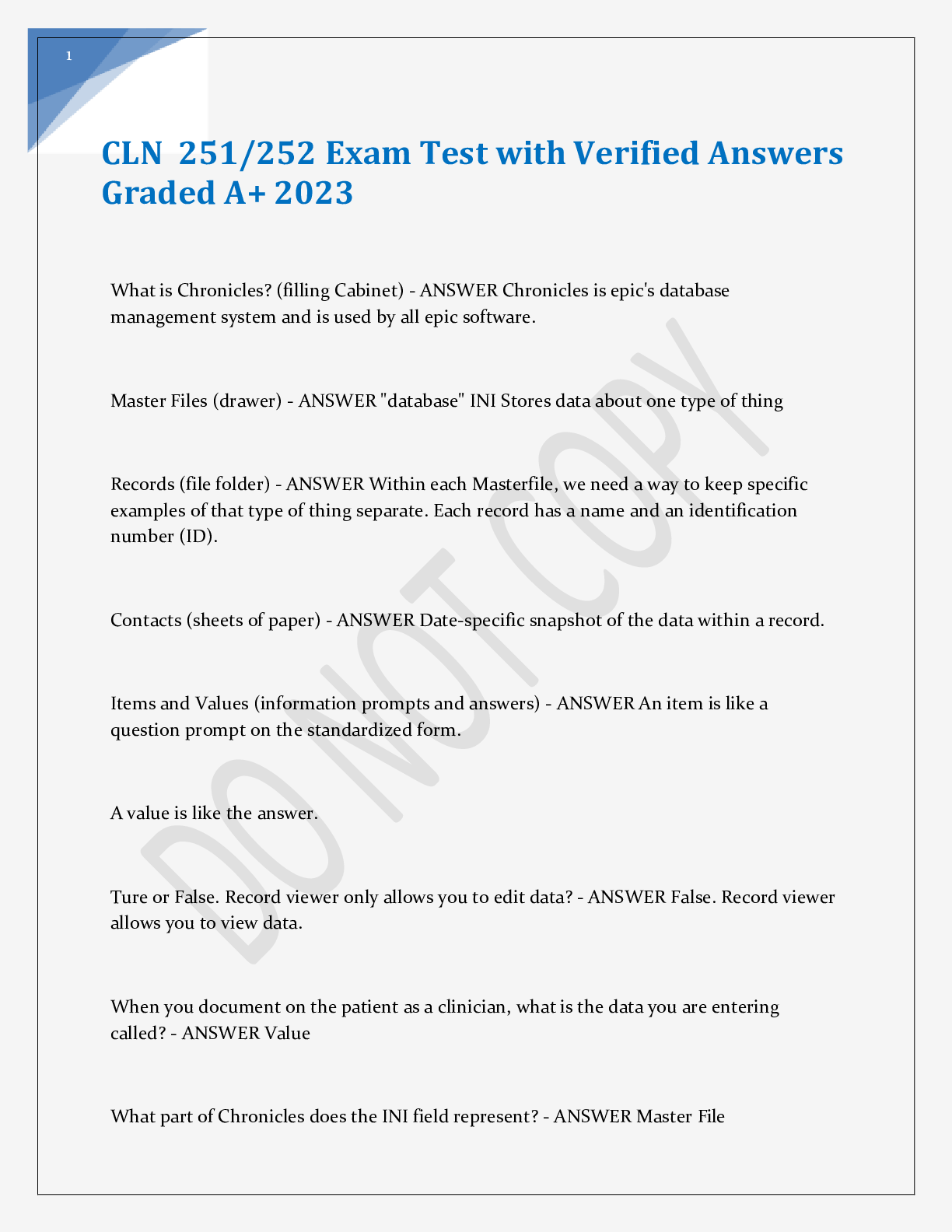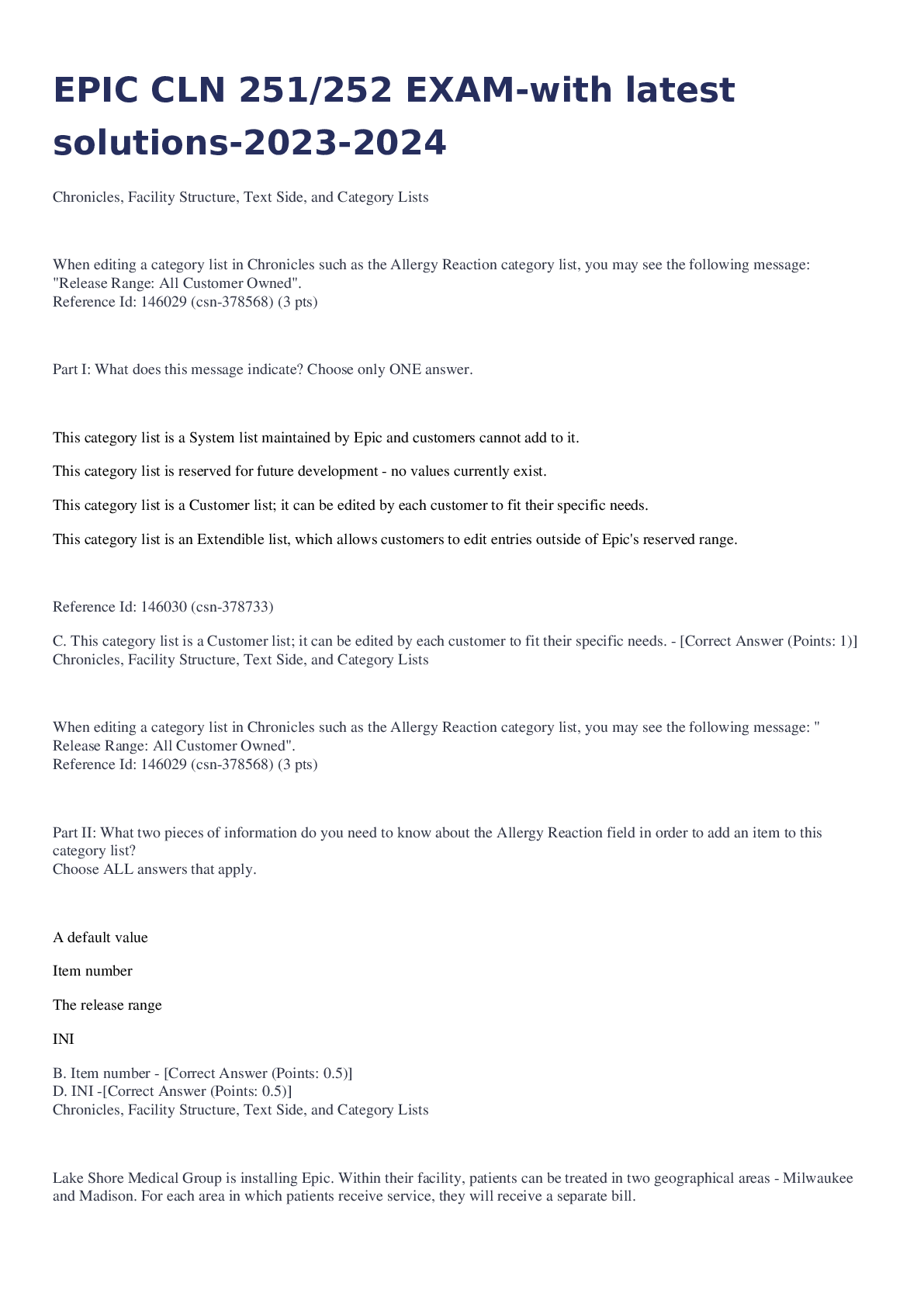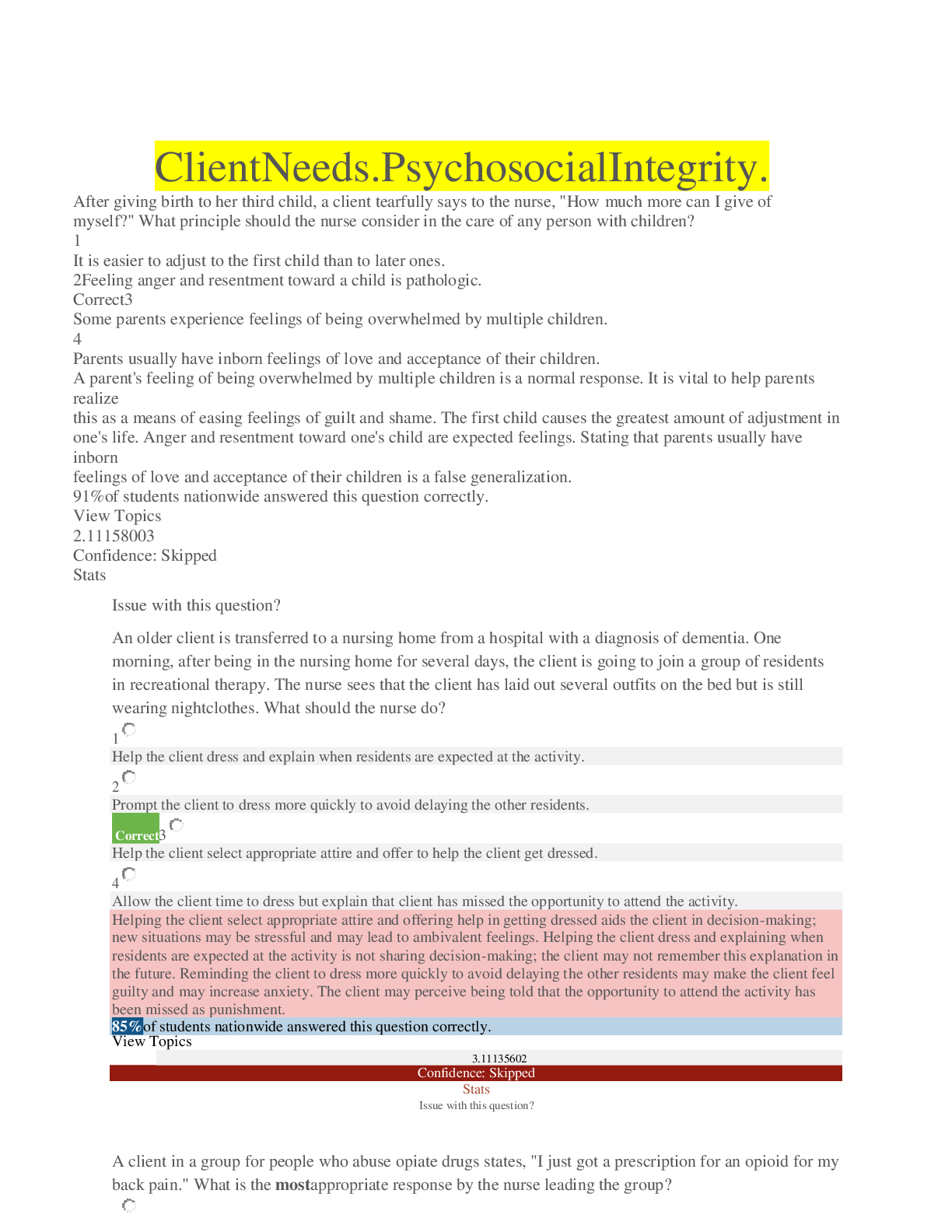{SOLVED} HPR 205 The Human Body, Health & Disease week 5 quiz | RATED A
Document Content and Description Below
1. Question : are necessary for the reproduction of B cells. Student Answer: Memory Bcells Helper Tcells Cytotoxic Tcells Regulatory Tcells ... Instructor Explanation: The answer can be found on p. 401, Anatomy, Physiology, and Disease. Question 2 . Question : Performing a throat culture for suspected bacterial tonsillitis includes testing for the presence of . Student Answer: Staphylococcus Streptococcus diplococcus cryptococcus Instructor Explanation: The answer can be found on p.387, Anatomy, Physiology, and Disease. Question 3 . Question : The spleen is in the upper right quadrant of the abdomen. Student Answer: Instructor Explanation : True False The answer can be found on p. 388, Anatomy, Physiology, and Disease. Question 4 . Question : Antigens are the body’s weapons against disease. Student Answer: Instructor Explanation : True False The answer can be found on p. 391, Anatomy, Physiology, and Disease. Question 5 . Question : A hypersensitivity reaction is also called an allergy. Student Answer: Instructor Explanation : True False The answer can be found on p. 406, Anatomy, Physiology, and Disease. Question 6 . Question : The cells are crude weapons that release chemicals to destroy infected cells that they encounter. Student Answer: mast Blymphocytic Tlymphocytic natural killer Instructor Explanation: The answer can be found on p. 396, Anatomy, Physiology, and Disease. Question 7 . Question : Bile is involved in the emulsification of fat. Student Answer: Instructor Explanation : True False The answer can be found on p. 437, Anatomy, Physiology, and Disease. Question 8 . Question : In a hiatal hernia, the esophagus passes through the diaphragm muscle. Student Answer: Instructor Explanation : True False The answer can be found on p. 442, Anatomy, Physiology, and Disease. Question 9 . Question : Enzymes can begin to inflame and destroy the pancreas. This condition is called pancreatomegaly. Student Answer: Instructor Explanation : True False The answer can be found on p. 439, Anatomy, Physiology, and Disease. Question 10 . Question : An abnormally formed will interfere with the development of clear speech. Student Answer: molar frenulum vermiform duodenum Instructor Explanation: The answer can be found on p. 419, Anatomy, Physiology, and Disease. Question 11 . Question : The descending colon is the FIRST part of the large intestine. Student Answer: Instructor Explanation : True False The answer can be found on p. 435, Anatomy, Physiology, and Disease. Question 12 . Question : Cirrhosis A, B, C, D, and E are viruses that damage the liver. Student Answer: Instructor Explanation : True False The answer can be found on p. 439, Anatomy, Physiology, and Disease. Question 13 . Question : If a tooth cavity is NOT taken care of but allowed to progress, the patient’s heart valves may become damaged. Student Answer: Instructor Explanation : True False The answer can be found on p. 422, Anatomy, Physiology, and Disease. Question 14 . Question : Cardiovascular disease is NEVER a risk factor for renal failure. Student Answer: Instructor Explanation : True False The answer can be found on p. 476, Anatomy, Physiology, and Disease. Question 15 . Question : The renal pelvis is basinshaped. Student Answer: Instructor Explanation : True False The answer can be found on p. 455, Anatomy, Physiology, and Disease. Question 16 . Question : Ischemia of the kidneys (as well as any other organ) is tissue injury from too little to the tissues. Student Answer: hormones oxygen glucose water Instructor Explanation: The answer can be found on p. 461, Anatomy, Physiology, and Disease. Question 17 . Question : Fever, abdominal pain, pallor, fatigue, bruising, decreased urination, and swelling are symptoms of . Student Answer: an overactive bladder hemolytic uremic syndrome urinary tract infection Uuremia Instructor Explanation: The answer can be found on p. 477, Anatomy, Physiology, and Disease. Question 18 . Question : A sphincter controls the release of urine. Student Answer: Instructor Explanation : True False The answer can be found on p. 473, Anatomy, Physiology, and Disease. Question 19 . Question : The is part of the circulatory system, because it is made up of a ball of capillaries, but because of its role, is included in the discussion of the urinary system. Student Answer: Glomerulus Proximal convoluted tubule Bowman’s capsule Loop of Henle Instructor Explanation: The answer can be found on p. 456, Anatomy, Physiology, and Disease. Question 20 . Question : New research has shown that urination is actually controlled by the . Student Answer: kidney bladder pons ureters Instructor Explanation: The answer can be found on p. 473, Anatomy, Physiology, and Disease. [Show More]
Last updated: 1 year ago
Preview 1 out of 8 pages
.png)
Reviews( 0 )
Document information
Connected school, study & course
About the document
Uploaded On
May 15, 2021
Number of pages
8
Written in
Additional information
This document has been written for:
Uploaded
May 15, 2021
Downloads
0
Views
20



.png)










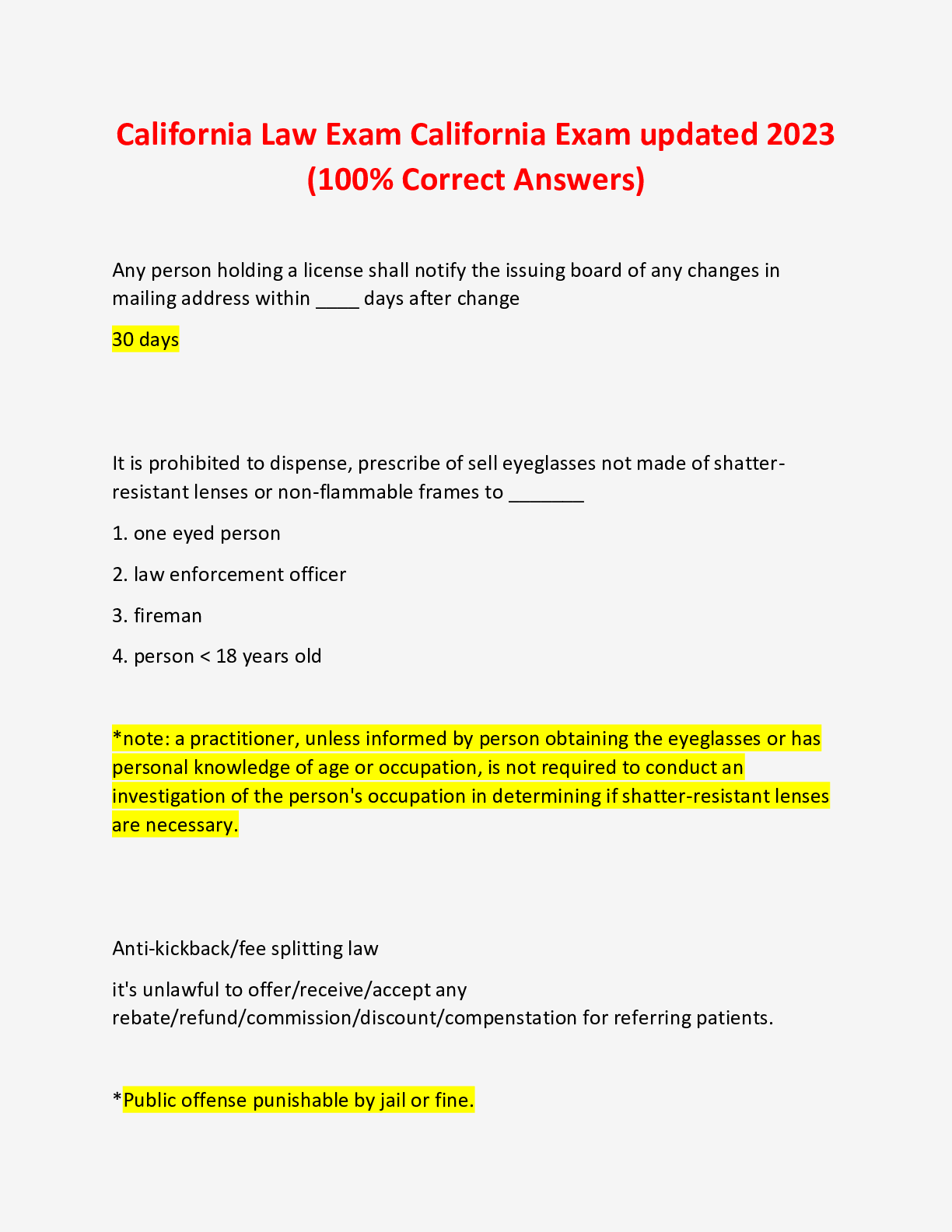


.png)
.png)
.png)








